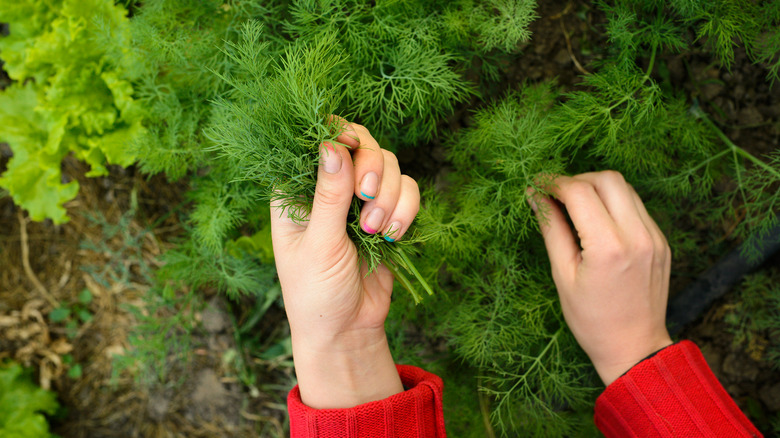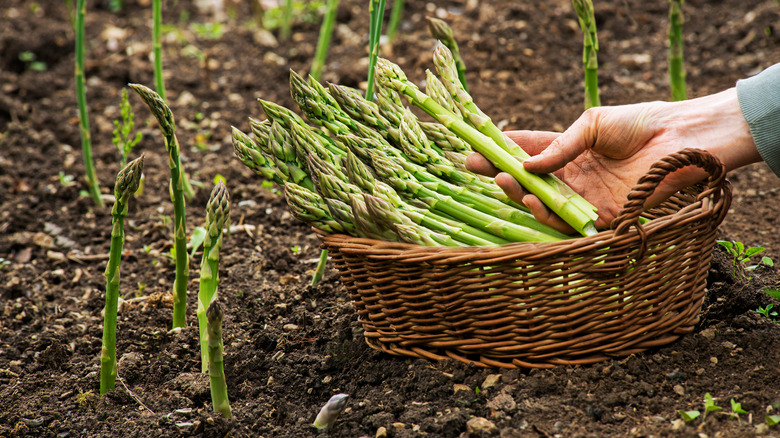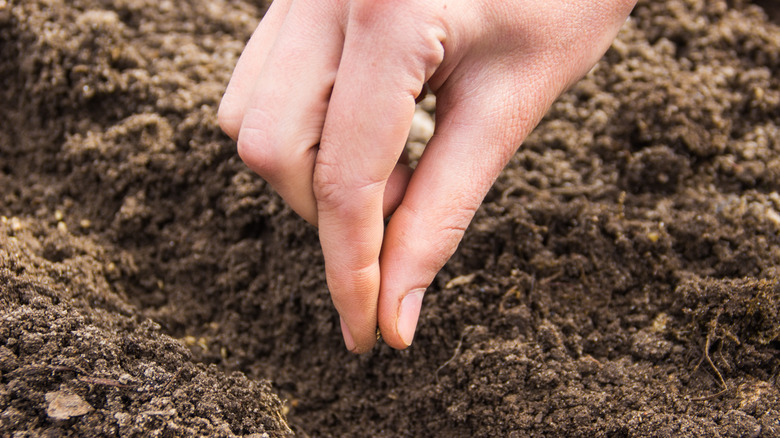The Dill In Your Garden Will Thrive When Planted Near This Popular Vegetable
If you love to grow fresh dill to enhance your soups or make homemade pickles, this gardening tip will help your herbs thrive. Companion planting can often be helpful for your garden, as some plants will draw helpful bugs, make the environment better for the plants they're near (such as providing more nutrients to your soil), or deter harmful insects. One great example? Asparagus can be a great companion for your dill plants, though the asparagus will likely stick around in your garden for much longer. While dill can grow and mature within a few months, asparagus plants can survive and continue growing for more than a decade.
Because both of these garden staples prefer soil that's a little acidic and moist, asparagus and dill can thrive together in the same environment. Asparagus can take a few years before it's ready to harvest, so your dill might start helping it before it becomes beneficial to the herb. To keep dill as a companion plant for asparagus, you'll need to continually plant more dill seeds for the plant to keep growing throughout spring and summer.
Why dill and asparagus are good companions
When the weather becomes hotter, dill plants will sometimes flower before they should, which is known as bolting. In the summer, the shade from your taller asparagus plant can keep your dill's environment cooler, helping them to flourish for as long as possible before flowering. With asparagus next to your dill, you may be able to harvest the herbs for longer, saving you money and allowing you lots to cook with.
While asparagus helps dill regulate its temperature, these herbs are incredibly beneficial to the vegetables as well. Dill is known to draw ladybugs and lacewings to your garden, which are natural predators of pests that eat away at asparagus, such as aphids. The versatile herb can also aid in keeping spider mites away from your vegetables. If you already have tall asparagus plants, they should start to benefit your dill right away. By placing these plants side by side in your garden, you can help both of them thrive and produce delicious ingredients to use in your kitchen.
How to care for dill and asparagus plants
When planting dill seeds in the ground, it's best to place them about 2 feet away from their neighboring plants and ¼ inch into the soil. Make sure that they are in the area where shade falls under your asparagus. Dill prefers moist soil and may need to be watered frequently during spells of hotter temperatures. If you notice some flowers starting to sprout from the herb, trim them off to continue harvesting the leaves for longer. To continue having fresh dill throughout the season, put more seeds in your garden a few weeks after you planted the last ones.
Similarly to dill, asparagus prefers the soil to stay fairly moist and requires approximately 1 inch of water each week. To help both of these companion plants get the water they need, try placing a layer of mulch over the soil. This will help to keep the ground from drying out.


